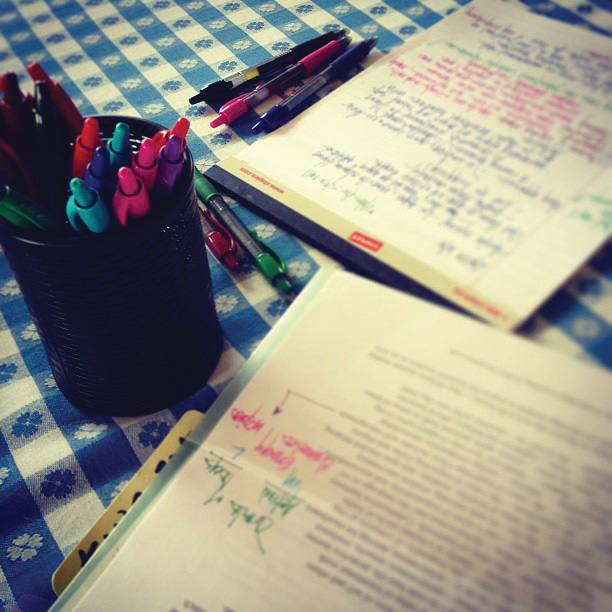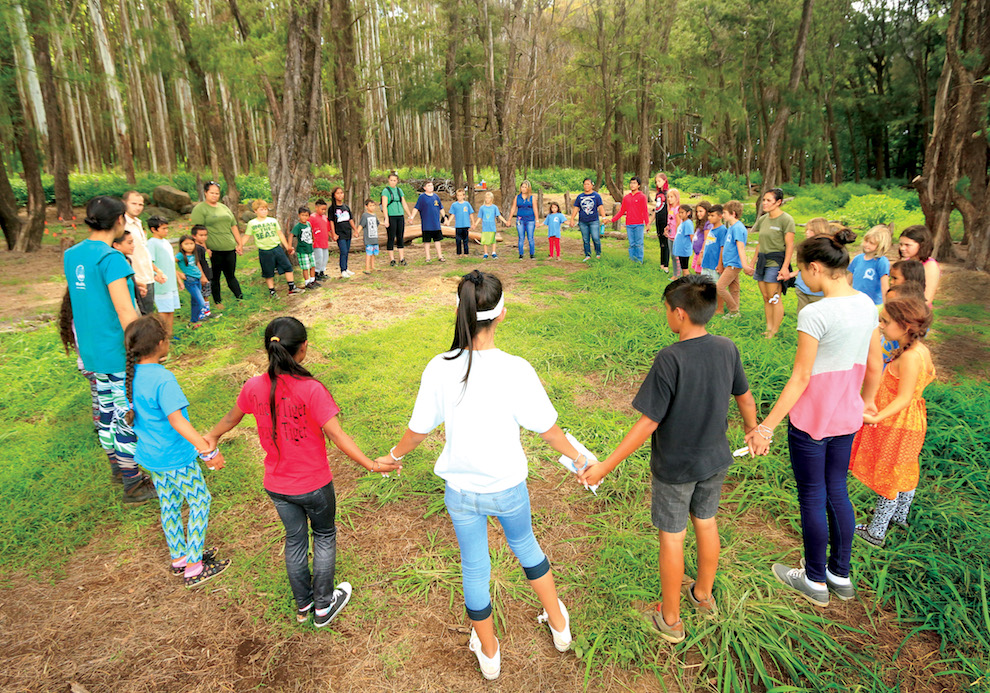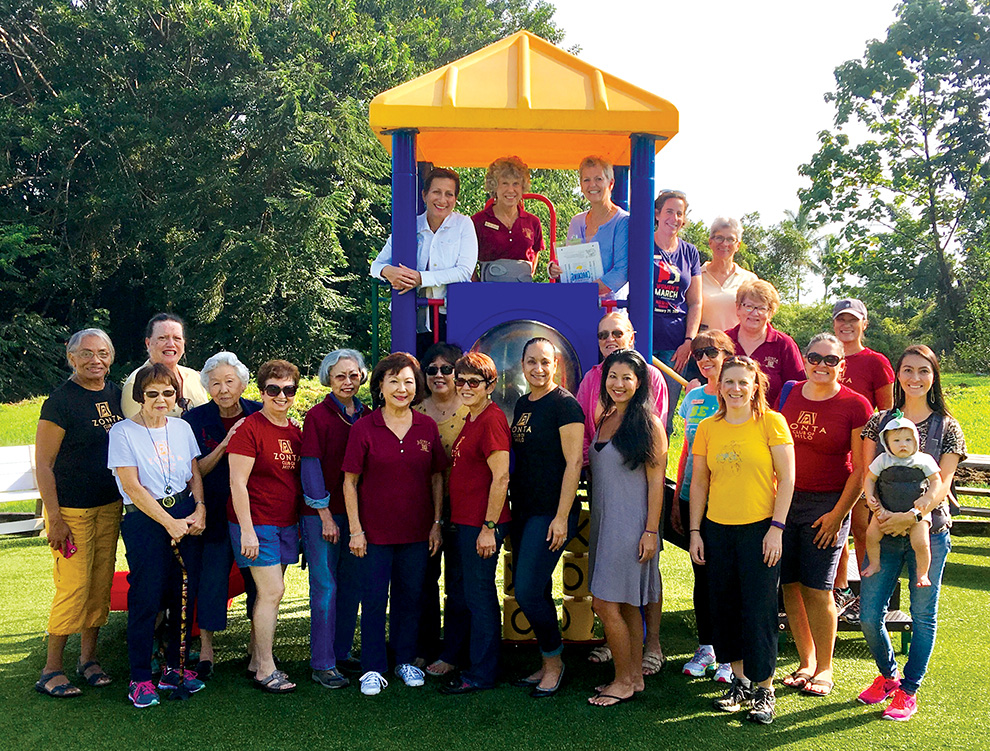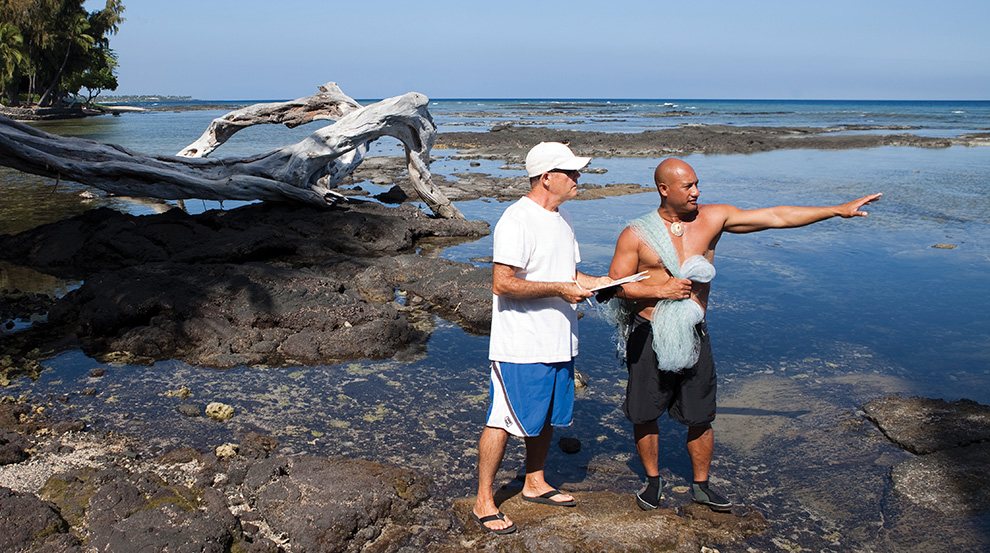
Wai Watchers: The Vital Role of Volunteers in Watershed Health

Mālama Mokupuni: Caring for Our Island Environment
By Julia Meurice
This is a story of how communities are uniting and strengthening to protect the quality of our water from the mountains to the coast, of people rebuilding relationships with life and their connection to the Earth. From the cloudy mists among ‘ōhi‘a trees in the Kohala Forest Reserve, to the dew that drips into mountain streams to mingle with ‘ōpelu (mackerel scad) and wana (sea urchin) at the coastline—all water is connected. So too are the humans who live together on Hawai‘i Island.
This story reveals how laulima, many hands working together in harmony, brings us closer to protecting what we hold precious: our water, the wai.
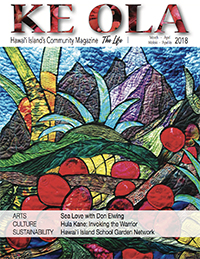
Since the 1970s, Hawai‘i’s population has tripled, ocean temperatures have risen, weather patterns have shifted, populations of native species have decreased dramatically, and budgets are tighter among the organizations that take care of the ‘āina. These factors, compounded by soil erosion, illegal activities, and wastewater pollution, have impacted the water from mauka (mountain) to makai (sea) and continue to threaten Hawai‘i Island’s special environments.
Groups working on water health have found that community members are eager to help however they can—and their help is necessary. One example is the South Kohala Coastal Partnership, which aims to revitalize one of the longest coral reefs in the state, the South Kohala reef ecosystem.
The South Kohala Coastal Partnership is composed of over 70 participants including 30 state and local experts such as biologists, kūpuna, cultural practitioners, teachers, fishermen, coastal business owners, land managers, resort representatives, and more. Together they tackle everything from land-based sources of pollution, to unsustainable fishing practices, to invasive species. Community participation has provided essential people-power for data collection and projects supporting this work.
The Partnership has been looking closely at how critical volunteers are in meeting conservation objectives. “We have a lot of individual organizations working in the Partnership separately, and the goal is to bring every agency and local organization together, because we all have similar priorities,” says Julia Rose of The Nature Conservancy, who coordinates the Partnership. Julia is encouraged by how volunteers unify and assist in meeting these conservation priorities, “I see the potential of evolving a volunteer program to combine all our individual operations—turning it into a cohesive volunteer network that every agency can tap into and build on.”

AFTER (left): May 2017: With less plant pressure, natural tides refill anchialine pools and native sedges such as makaloa return. Native fish and crustaceans will soon follow and can now live here. photos courtesy of Julia Meurice
Keeping the Mountain Together
The reefs located at the bottom of Kohala Mountain reflect what happens at higher elevations. Over the centuries, events such as the historic harvest of sandalwood, the introduction of species like goats, overgrazing by cattle, fires, and floods have converted much of the once-forested mountain into grassland and denuded landscapes. Without roots, ferns, and mosses to catch and hold the heavy rains, acres of bare soil wash downstream. This erosion buries corals in sediment and reduces the reef’s once-rich diversity of fish and invertebrates. Did you know that each grain of sediment can be re-suspended 10,000 times by waves, blocking light and re-smothering coral over and over? Agencies like The Hawai‘i Wildfire Management Organization and The Kohala Center are working in partnership with landowners and ranchers to reduce this impact up-slope.
The Kohala Mountains collect and store the rainwater that feeds all life and supports the human communities below. The native forest attracts clouds and helps to retain the water within the soil and underground. Volunteers and small crews have provided much-needed people-power in the planting of native trees and shrubs and other revitalization projects organized by the Kohala Watershed Partnership, a program of The Kohala Center.
“Since its creation in 2002, the Kohala Watershed Partnership has planted over 40,000 native trees across 220 acres with the help of over 1,000 people,” says Cody Dwight, its program coordinator. The scale and effort of this revitalization work “is keeping the mountain together”—literally from running off into the sea, says Kukui Keli‘iho‘omalu, who worked for the Kohala Watershed Partnership for more than 12 years and grew up on Hawai‘i Island.
All Eyes on Deck
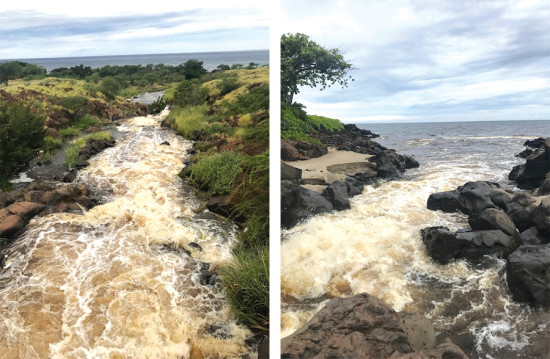
Community members themselves form some organizations, such as the Puakō Makai Watch, which operates under guidance from the Department of Land and Natural Resources and The Nature Conservancy. This group of volunteers sets up booths at events through their ReefTeach Program where they provide information about marine life creatures, how human behavior affects them, and some fishing regulations and guidelines. Their outreach also includes recommendations for swimmers, divers, and snorkelers on how to respectfully and safely enjoy the waters and reef.
After volunteers are trained with ReefTeach, they can also lead important coastal monitoring activities such as reef fish surveys with Makai Watch to track changes in populations over time, and information collection on how many visitors are present plus how people are using the beach.
State and National Parks in Hawai‘i also recruit help from the community to complete projects. At Kaloko-Honokōhau National Historical Park, biological scientist Amanda McCutcheon with the Pacific Islands Network Inventory and Monitoring Program brings along interested volunteers to help check water quality at anchialine pools. These pools are depressions in lava fields that have a mixture of salt and fresh water. Together, they also test the health of groundwater.
“Projects like these would not be possible without the support of our volunteers,” Amanda says. “Our water quality data is useful in determining the impacts of nearby developments on our precious water resources. It’s helpful to have informed volunteers to share this impact.”
Citizen Science
One program type that takes volunteerism a step further is “citizen science.” In this model, community members are trained and empowered to take an active role in understanding watershed health while also collecting professional scientific data for environmental decision-making at higher levels.

Citizen science programs typically have a community or site organizer who coordinates a volunteer base of people that helps with data collection. The volunteers participate in a series of classroom and field trainings until they are ready to sample on their own. They must be disciplined and follow a protocol that can include exact locations, methods, dates, and even time of day (the tide is important). The volunteers in some programs form teams that collect samples, conduct tests, and record data. Water samples are then transferred to a local lab for filtration and refrigeration before being shipped to a participating analytical laboratory for more in-depth nutrient and bacterial tests.
Recognizing the critical shortage of staff and funding for water quality monitoring of Hawai‘i’s coastal areas, Maui’s community mobilized a team of citizen scientists called Hui O Ka Wai Ola in partnership with The Nature Conservancy. This dedicated hui—called the “Clean Ocean Team”—now samples over 40 coastal sites across Maui, making it one of Hawai‘i’s most active volunteer-based monitoring programs.
“While the Department of Health does monitor beach quality at certain stations around the island, their monitors can’t be everywhere,” says Dr. Kim Falinski, one of the Conservancy’s marine science advisors and a water quality expert. “That’s where we come in. We fill in the gaps.”
According to Falinski, the most essential ingredient for a successful citizen science water-quality monitoring project is the people—you must have strong community support to make it happen. This is followed by funding, equipment supplies, a Quality Assurance Project Plan and finally, a lab space.
On Hawai‘i Island, the Coral Reef Alliance (CORAL) is exploring how to best support a citizen science program along our coastlines, similar to the Maui hui (group). In and around Puakō’s coastal waters, a group of volunteers has taken quarterly water samples at six sites along a two-mile stretch that includes some popular swimming spots. The team has tested for salinity, pH, turbidity, nutrient, and bacteria levels. Their sampling equipment and methods are guided by the same Quality Assurance Protocol that Falinski developed, and could be included in the state’s database once a stable program evolves.
As Danielle Swenson, Engagement Manager for CORAL, says, “The citizen science volunteers are critical to the monitoring process. Their passion, attention to detail and willingness to learn are what drives this program. It is exciting to witness the community caring about the water quality and actively doing something about it.”
Revitalizing Kīholo Bay
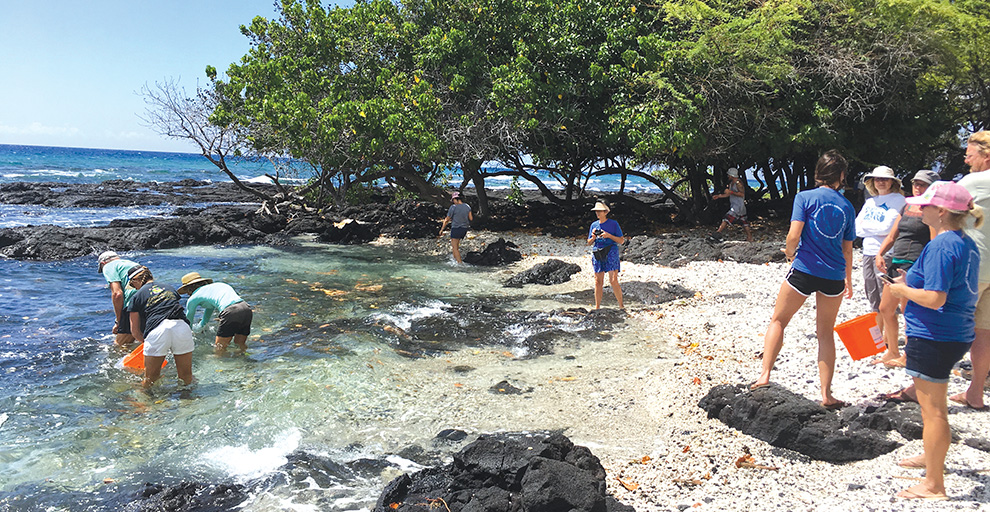
Two groups that support each other in bringing together community for ecological revitalization are Hui Aloha Kīholo and The Nature Conservancy’s Hawai‘i Island team. They organize and host a workday in Kīholo Bay every third Saturday of the month. Tasks have included clearing kiawe (algaroba) trees, restoring the fishponds, rebuilding lava rock walls, removing invasive plants to make space for natives, and more. The best part is arguably the enormous potluck that brings everyone together pau hana (after work), and the talk-story following the meal where mo‘olelo (stories) from different speakers are shared.
The incredible impact of laulima here is evident. Over 2500 volunteers have contributed 12,000 volunteer hours since 2012, and the way the land has been brought back to life is immeasurable. “There has been much degradation that has happened in the last several decades, but Kīholo is resilient and with active revitalization of the area—there is now a glow, from the fish species to the coral health and the colors of the ocean there,” says Ku‘ulei Keakealani, whose family are descendants of this ahupua‘a (district) and part of several Native Hawaiian families that guide Kīholo’s future.
“I see, and more so I feel, Kīholo is happy. She can breathe again, and every breath that Kīholo breathes is a healthier breath, a much more meaningful breath—she is a product of all that care.”
Making the Connection
Volunteerism reconnects people to the spirit of the ‘āina. Rebecca Most, The Nature Conservancy’s marine coordinator who helps organize Kīholo’s workdays says, “It is the connections between community, culture, and conservation—including active revitalization, education, research, sharing of mo‘olelo and history, spiritual and emotional renewal, traditional practices, and youthful recreation—that grow the love and understanding which deepens our bonds with a place.”
Hawaiians have long recognized the connection between our vitality and clean abundant water, or wai—so much so that one of the meanings of waiwai is wealth. Whatever feels best to you and your family, there are many ways to get involved and connect deeper to the land and sea. ❖
For more information:
Volunteer opportunities exist with any of the organizations mentioned above, plus many more through the Hawai‘i Conservation Alliance’s Conservation Connections page: conservationconnections.org/opportunities
Learn more about the South Kohala Coastal Partnership at: southkohalacoastalpartnership.com/
Reference: Julia Meurice, Lynker Technologies, Inc./NOAA Affiliate
